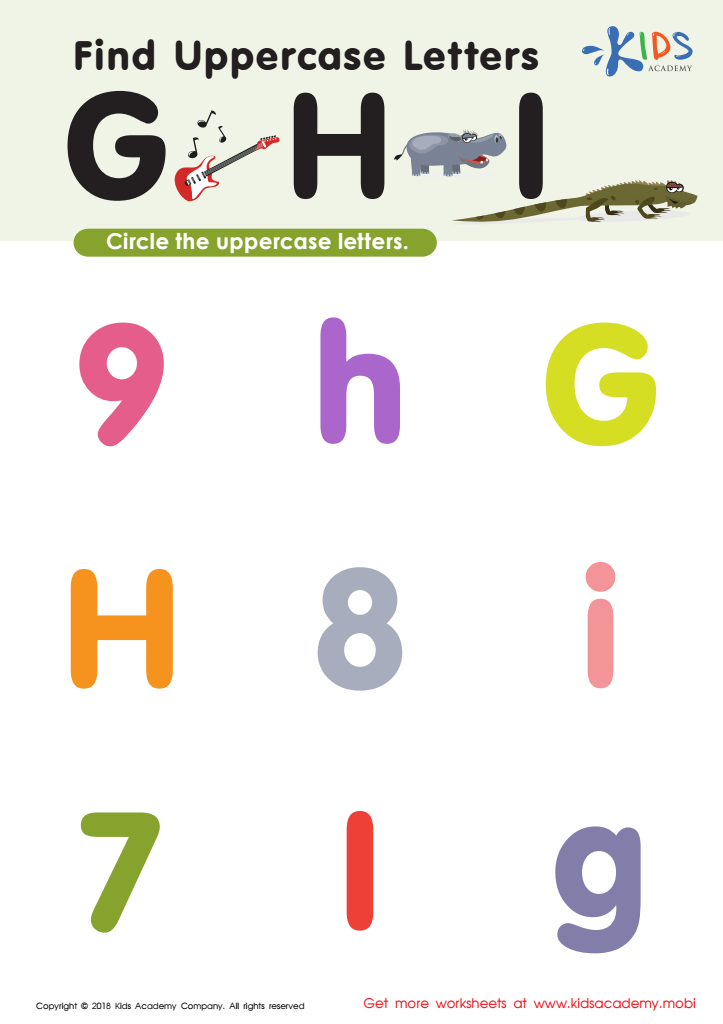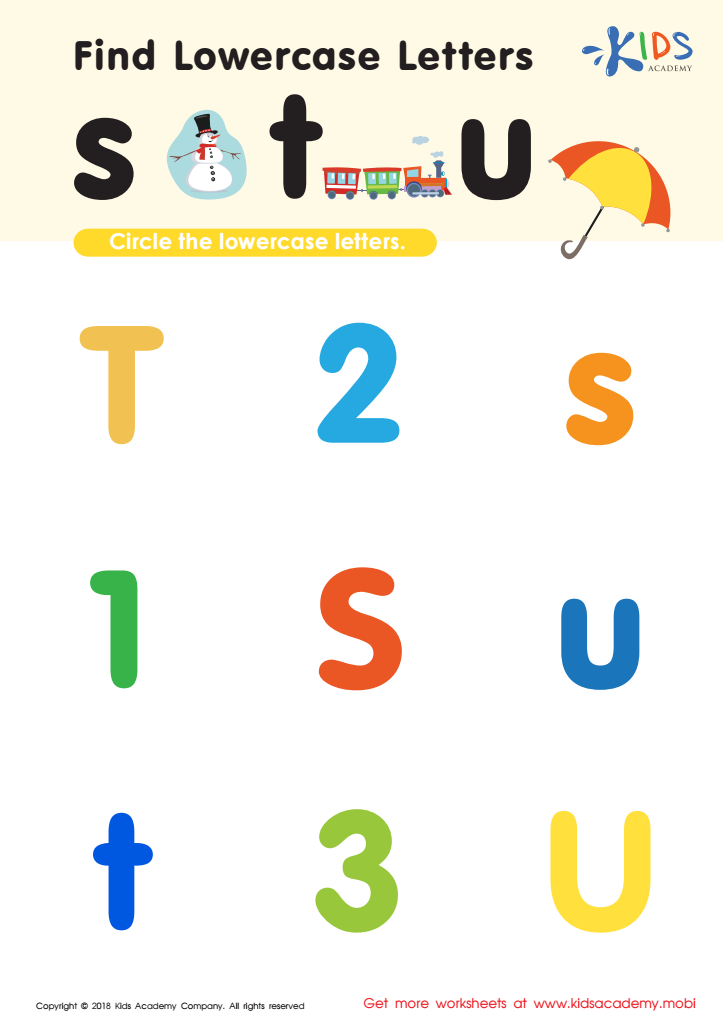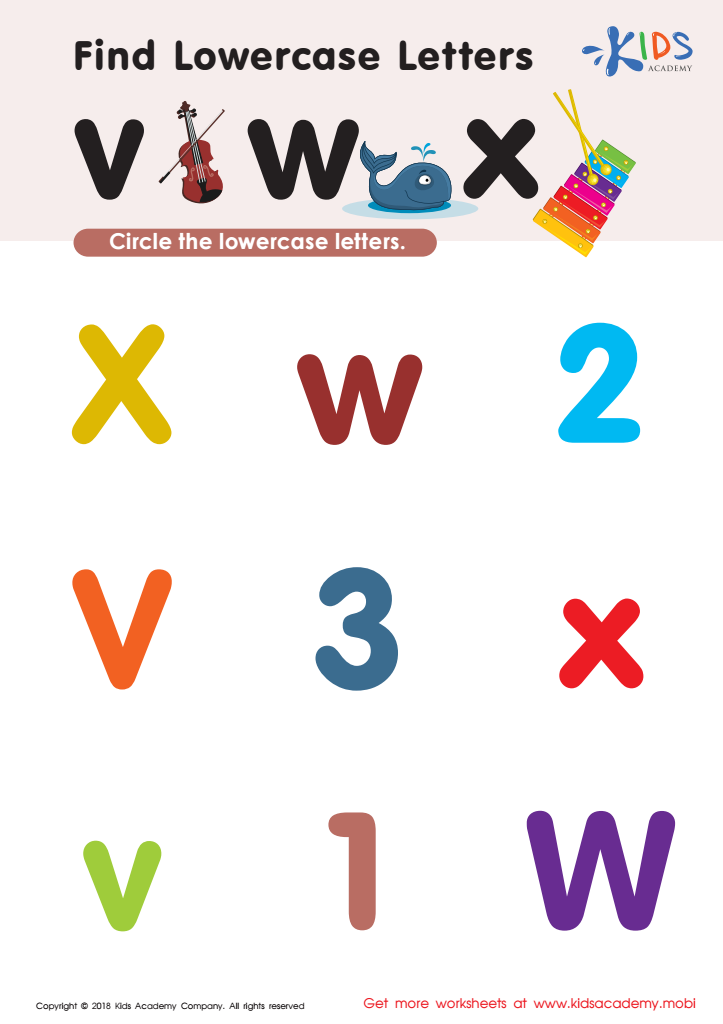Alphabet familiarity Normal Letter Recognition Worksheets for Ages 5-9
6 filtered results
-
From - To
Explore our "Alphabet Familiarity Normal Letter Recognition Worksheets" designed for kids ages 5-9. These engaging and interactive worksheets help young learners build essential letter recognition skills in a fun and effective way. Each worksheet offers a variety of activities that encourage children to identify, trace, and differentiate between letters, fostering a strong foundation for reading and writing. Ideal for both classroom use and at-home learning, our worksheets cater to diverse learning styles, ensuring every child gains confidence in their literacy journey. Unlock the joys of learning with our thoughtfully crafted materials that make mastering the alphabet an exciting adventure!


Find Uppercase Letters G, H, and I Worksheet


Find Uppercase Letters Worksheet


Find Uppercase Letters J, K, and L Worksheet


Find lowercase Letters s t u Worksheet


Find Uppercase Letters A, B, and C Worksheet


Find Lowercase Letters v w x Worksheet
Alphabet familiarity and normal letter recognition are critical skills for children aged 5 to 9 years, forming the foundation for literacy development. At this age, children begin to engage with written language, and recognizing letters is a prerequisite for reading and writing. When parents and teachers prioritize alphabet familiarity, they set the stage for phonemic awareness—the ability to hear, identify, and manipulate individual sounds, crucial for decoding words.
Children who struggle with letter recognition may find reading challenging, which can lead to frustration and disengagement. This academic difficulty can affect self-esteem and overall motivation to learn. Conversely, when children are comfortable with letter recognition, they're better equipped to explore and succeed in literacy, fostering a love for reading.
Moreover, a strong understanding of letters allows for early intervention, where educators and parents can identify potential learning disabilities or delays. Through interactive activities, games, and daily exposure, families and schools can create a language-rich environment that supports and nurtures these essential skills. Ultimately, investing in alphabet familiarity not only enhances immediate literacy capabilities but also lays the groundwork for a child’s long-term academic success and lifelong learning. Parents and teachers thus have a vital role in cultivating these skills for their children's future.
 Assign to My Students
Assign to My Students




















